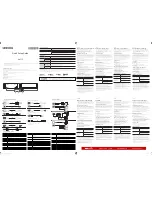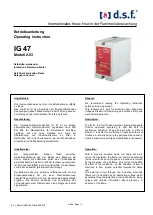
User Manual
Doc. Number: ESO-323064
Doc. Version: 2
Released on:
Page:
72 of 82
Document Classification: Public
7. REFERENCE MATERIAL
7.1 Calibration Plan
The calibration plan defines the default calibrations obtained and archived for the user by
the Paranal Science Operations. The CRIRES science calibration plan currently includes
the following measurements. Note that ESO reserves the right to decrease the calibration
frequency if tests show that this has no effect on the quality of the reduced data.
All standard calibrations will be acquired by the Observatory staff during the day following
the night of the observations (or within the validity period indicated in the tables below).
"Matching parameters" describes the most critical parameter for generating the automatic
calibration. For instance, darks will have the same DIT as the science frames, flats will be
taken in the same wavelength setup as the science, etc.; wavelength calibrations and flat
field exposures will be taken through the 0.2”
or 0.4”
slit.
The daily calibrations are taken by employing the metrology system.
Table 11: Standard calibrations
Calibration
Number
Matching parameters
Validity
Darks
3
DIT
1 day
Flats
3
wavelength, slit width
1 day
Wavelength (FP etalon)
1
wavelength, slit width
1 day
Wavelength (UNe lamp)
1
wavelength, slit width
1 day
Wavelength LM (N
2
O gas cell)
1
wavelength, slit width
1 day
Gas cell spectrum HK (SGC)
1
wavelength, slit width
1 day
In addition to the standard calibrations, we will acquire the following calibrations to monitor
the stability of the instrument.
Table 12: Instrument monitoring calibrations
Calibration
Purpose
Frequency
Spectral resolution (day)
Monitoring of the spectral resolving power
1 day
Efficiency monitoring (night)
Throughput monitoring with standards
30 days
RV standard stars (night)
Monitoring of radial velocity stability
90 days
Grating drifts (day)
Monitoring of the wavelength precision
90 days
Distortion map (day)
Monitoring of the spatial resolution along
the slit
180 days











































